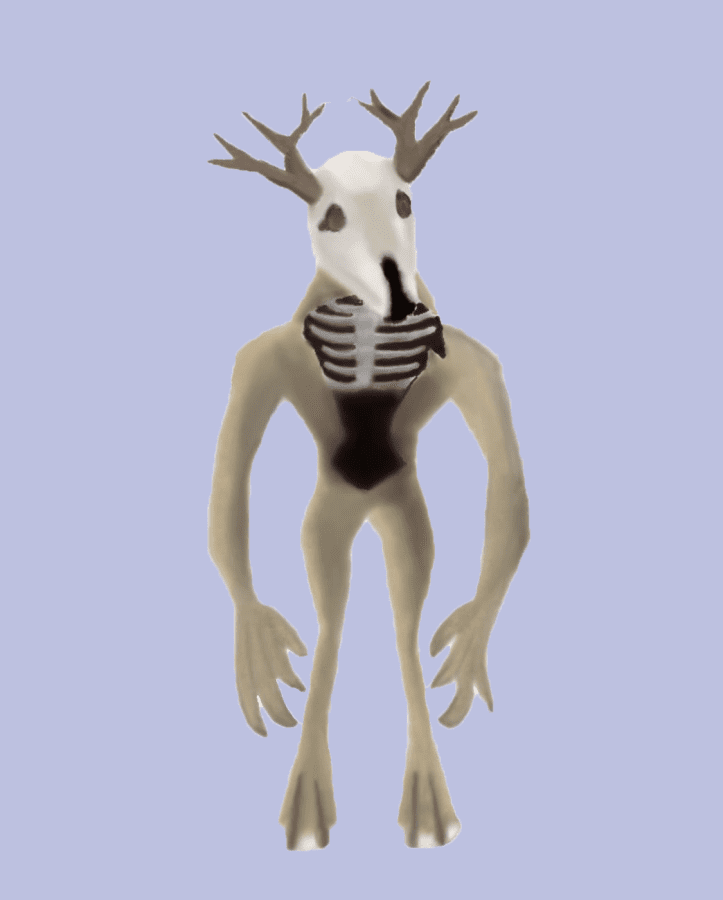‘Prodeus’ rises as the ‘DOOM’ clone to end all ‘DOOM’ clones
Nov 10, 2022
Last updated on Oct. 29, 2024 at 03:14 p.m.
Nostalgia comes in waves for the entertainment industry. The 2000s and early 2010s box office were flooded with ’80s throwbacks that ranged from stunning comebacks to cash grabs that were rightly tossed into the Walmart bargain bin.
Later, the 2010s had ’90s nostalgia thriving, with billions of dollars coming from the “Jurassic World” trilogy and poor attempts at modernizing classics like the infamous 2016 “Powerpuff Girls” reboot, as well as “Bel-Air,” a somber re-imagining of the “The Fresh Prince of Bel-Air,” which played out like a bad SNL parody.
The gaming medium is no exception to this, with the later 2010s being a return to various ’90s classics like “Final Fantasy VII,” along with “Resident Evil 2,” “MediEvil,” “Crash Bandicoot” and even “Tony Hawk’s Pro Skater” series.
Better yet, the Super Nintendo got a micro-console release in 2017, giving this new generation the best experience of second generation’s gaming milestones.
Get The Daily Illini in your inbox!
When it comes to gaming nostalgia, nobody can go about remembering the ’90s without bringing up the first-person shooter: a genre-defining title that inspired countless Senate hearings about how violent video games would be for years to come, “DOOM” being one of those games.
No introduction is needed for the 1993 title, launching id Software into the elite circle of PC gaming. The game is responsible for trailblazing the mechanics and design philosophies of FPS levels and weaponry, as well as eccentric massive multiplayer tournaments and ad campaigns, such as “Daikatana’s” memorable advertising.
Above all else, “DOOM’s” greatest impact was its modding community. A seemingly undying cult of shareware worshipers, constantly finding new ways to modify the nearly 30-year-old engine to make new environments, new enemy types and near-impossible challenge levels, were pretty much designed to torment the souls of streamers like Vargskelethor Joel.
Alas, amidst the endless sea of mods found on Mod DB, one stood above all. “Brutal Doom” is a 2010 gameplay mod for “DOOM II” made by infamous Brazilian modder Sergeant Mark IV, taking the violence of the ’90s FPS classic and raising it to a truly ludicrous degree.
The nightmares of ’80s mom groups and satanic panic parents manifested in its absurd gore effects, blood splatter and ear-bleeding sound redesign that made every shot an earth-shattering blast.
Even “DOOM” creator John Romero imagined what would have happened if “DOOM II” was released like “Brutal Doom” back in the early gaming days during a livestream, saying that it “would’ve destroyed the game industry.”
This context is necessary because “Prodeus” truly makes an adamant effort to be the be-all end-all of “DOOM” clones, nearly succeeding with flying colors in turning “DOOM” modding energy into a fully constructed original game.
“Prodeus,” crowd-funded and developed by Bounding Box Software, spent years in early access before finally releasing in 2022.
It features a main campaign but also a deep modding system accessible in-game, so much so the actual campaign is buried in the loaded levels menu, similar to other campaigns you can download from the workshop.
The three-to-four-hour storyline, like its inspiration, is a mere text box-worth of plot, but the gameplay is all one needs for this genre.
“Prodeus” takes the gore of “Brutal Doom” and morphs it into fully-integrated particle effects. The assortment of weapons — some locked at the time of release for pending updates — can be used to annihilate the demon-enemy sprites into a red paste. Sprites are the appropriate term for the enemies in “Prodeus,” as its biggest nerd strength, and they are actually 2D.
The iconic style of “DOOM,” where enemies would constantly be looking at you because the engine couldn’t process them as 3D models, is translated here purposely for a retro aesthetic.
Here, it takes a step further with various angles, from top to bottom, being rendered to change to the angle in which you view the sprite.
Thus, there are several different ways to look at the character like it were a 3D polygon, but instead, it’s just insanely skilled pixel art from a team that truly has a passion for what was at the time an engine limitation.
The weapons are the familiar boomer shooter style of high-impact sprites with satisfying sound effects, now sporting detailed reloaded animations.
The levels are top-notch in their layout, with the key-hunting practices of “DOOM” have been made much easier to navigate with clear directions and pathways that rarely have the player getting lost, letting them appreciate the massive set pieces in all their voxel glory.
The only thing that can hold back “Prodeus” is its inability to escape its early access feeling. The weapon screen has various empty slates for guns one would think are just unlockable but don’t actually exist yet.
The game’s single campaign ends on a cliffhanger that heavily emphasizes modders will make up for that, but at the time of writing what few campaigns available are deeply underwhelming given their reliance on in-game modding tools.
Overall, “Prodeus” is a must-play for boomer shooter fanatics and “DOOM” fans, and one that’s future will be watched with great interest as it evolves.
“Prodeus” is available on Windows, Nintendo Switch, PS5, PS4, Xbox One and Xbox Series X/S.






